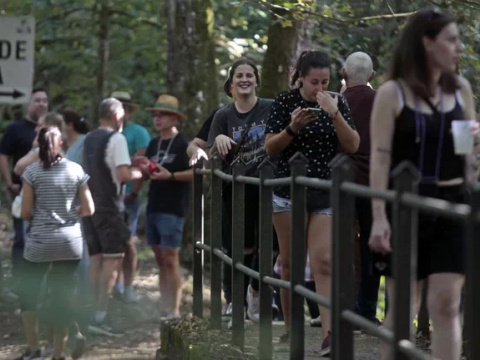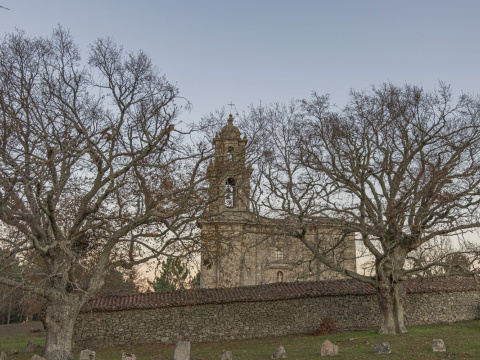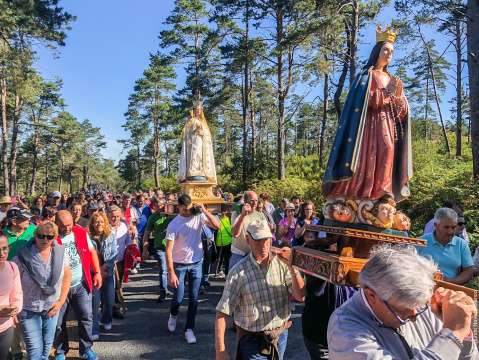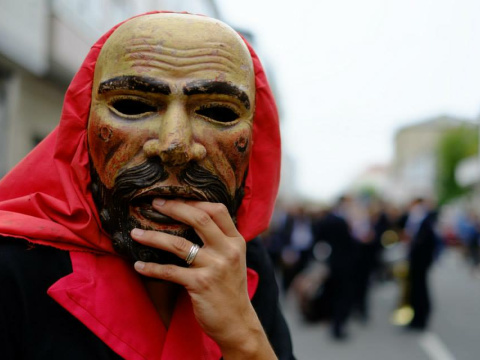
A Ermida Romería
El Meco and the Pampórnigas feature prominently in these traditional festivities.
This Romería in honour of the Virgen de los Remedios (Our Lady of Remedies), has a unique procession that includes folkloric figures known as El Meco and the Pampórnigas.
El Meco is a character who, according to legend, personifies the devil. Wearing a slightly diabolically looking mask, red suit and carrying a staff fitted with a patch of thorny shrub on one end. The people of Quiroga have various theories about the meaning of El Meco, one is that he was a priest or seminarian from Meco, a town near Alcalá de Henares (Community of Madrid). He was known to be adulterous, lewd and violent, which is why he may be represented as a devil. Another theory is that his name was really Meco, who was a resident of O Grove (Province of Pontevedra). He intimidated and frightened women with his abuse and violence. That didn’t end well for him, as the women united to hang him from a fig tree. Visitors will thus hear a common “call and response” during the procession: Who killed Meco? (Quién mató El Meco?). The local women (las quiroguensas) will reply: We [all the women] killed him (Lo matamos todas).
Some of the rituals during the procession include money donations. The money is thrown on the ground by the spectators for El Meco to pick up. As he bends over, they slap him. El Meco will retaliate by striking with his staff, fitted with a thorny gorse shrub, playfully known as the “golpe de tojo” (gorse blow). He will also try to prevent the congregation from entering the church for mass by starting a small squabble. El Meco is also closely linked to the house of Eliseo González, the family that made his mask and gives life to the character every year, with the role passing from father to son.
Las Pampórnigas are two giants. One is a woman dressed in a red dress and hat, holding a bunch of grapes in her mouth. The other is a man similarly dressed in blue and smoking a pipe. These two characters go through the procession dancing a traditional Quiroga folk dance, which has been recovered by the Galician bagpiper Colomán.
Date: 8–9 September
 Directions
Directions 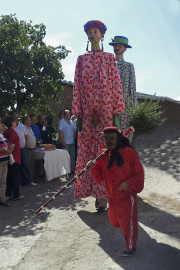
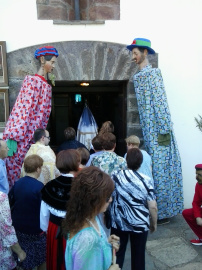
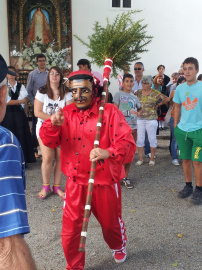
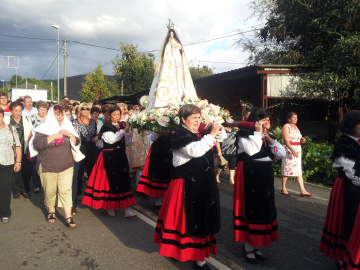

 What would you improve?
What would you improve? 